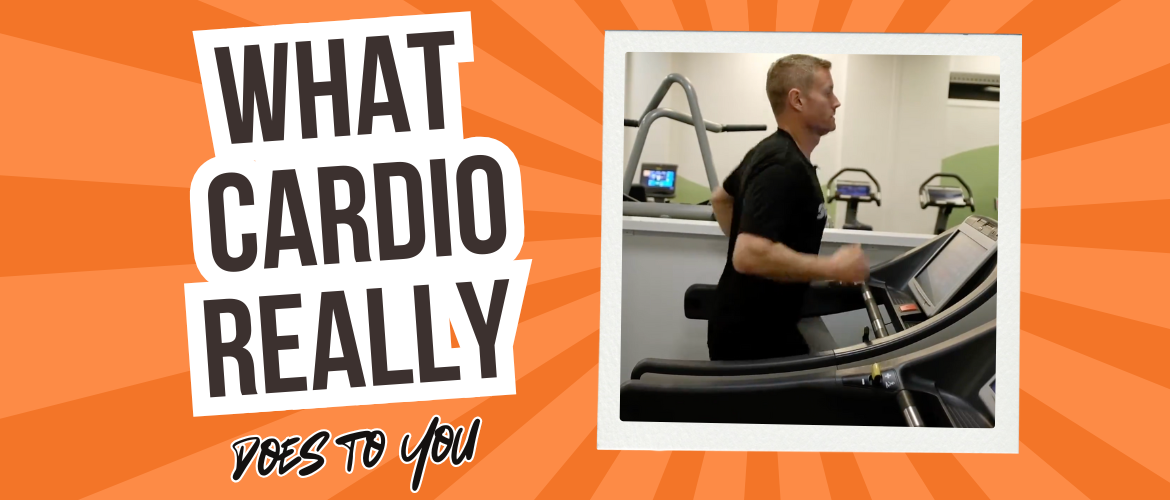GET IN TOUCH TODAY!
"*" indicates required fields

As a personal trainer, it’s easy to focus heavily on resistance training — and rightly so. But neglecting cardiovascular fitness can leave your clients falling short of their health and performance potential. So, how exactly does cardio training help your clients? And why should every coach understand what’s really going on inside the heart and lungs during aerobic exercise?
Let’s break it down.
When a client begins regular aerobic training — whether that’s running, rowing, cycling, or circuit-based conditioning — their cardiovascular system undergoes significant adaptations that improve performance and health.
Endurance training strengthens the left ventricle, allowing it to pump more blood per beat. This increase in stroke volume means the heart doesn’t have to work as hard at rest or during exercise. More oxygen reaches the muscles with every beat, and that’s a direct boost to performance.
With each beat delivering more blood, the heart can slow down at rest. This is known as bradycardia, and it’s a classic sign of improved cardiovascular fitness. For clients, this can translate to improved recovery, lower blood pressure, and better energy levels.
Cardiac output = stroke volume × heart rate. During exercise, both increase — especially stroke volume in trained individuals — improving the delivery of oxygen and nutrients to working muscles.
Cardio training increases capillary density in skeletal muscles and the lungs. This enhances the transfer of oxygen into the blood and the removal of waste products like carbon dioxide and lactic acid.
With consistent training, the body produces more plasma and red blood cells, increasing the oxygen-carrying capacity of the blood. This also helps with temperature regulation and hydration.
While the lungs don’t increase in size, their function improves dramatically with training.
At rest and during submaximal exercise, trained individuals breathe more slowly and deeply. This means they extract more oxygen with fewer breaths, improving endurance and reducing fatigue.
The diaphragm and intercostal muscles get stronger, helping the body meet the oxygen demands of higher intensity work.
Whether you coach fat loss clients, general population clients, or performance-focused athletes, aerobic fitness is essential for:
Improved recovery between sets and sessions
Better fat oxidation and metabolic flexibility
Reduced cardiovascular disease risk
Increased work capacity
Lower resting heart rate and blood pressure
Enhanced mental clarity and mood
By helping your clients build their aerobic base, you’re not just boosting their VO2 max — you’re improving their quality of life.
Not every client cares about “stroke volume” or “mitochondrial density.” But they do care about:
Feeling less out of breath
Recovering faster between sets
Having more energy throughout the day
Living longer and healthier
So simplify the science. Say things like:
“Your heart’s becoming more efficient — it doesn’t need to beat as fast.”
“You’re building more capillaries to deliver oxygen quicker.”
“That burning feeling in your legs? You’ll handle that better each week.”
In a word: yes.
Even if your main programming is built around barbells and dumbbells, improving your client’s aerobic system means they can:
Handle more volume
Recover faster
Sleep better
Tolerate stress more effectively
A well-developed aerobic base is like having a bigger engine — even if you’re only planning short trips.
Cardio training benefits go way beyond just “getting fitter.” As a PT, understanding the why behind aerobic adaptations will make you a better coach — one who can tailor smarter sessions, explain results with confidence, and empower clients to stick with it long-term.
Want the full breakdown with examples and coaching tips?
If you want to master the science behind effective training and learn how to explain it clearly to clients, check out our Level 2 & Level 3 Personal Training courses — or go all in with one of our Advanced or Elite packages.
Enrol today and take the next step in your PT career
Explore Our Personal Training Courses to find the right fit for your goals.
Submit the form below and we’ll be in touch to guide you through your options.
"*" indicates required fields